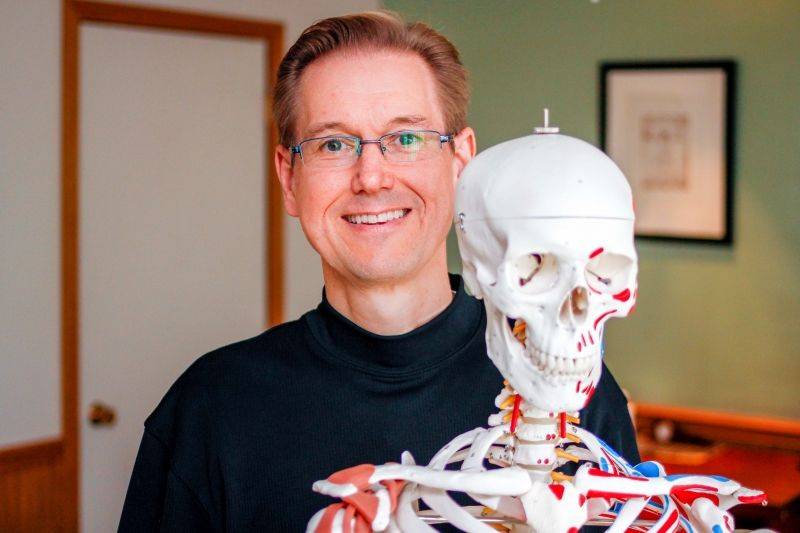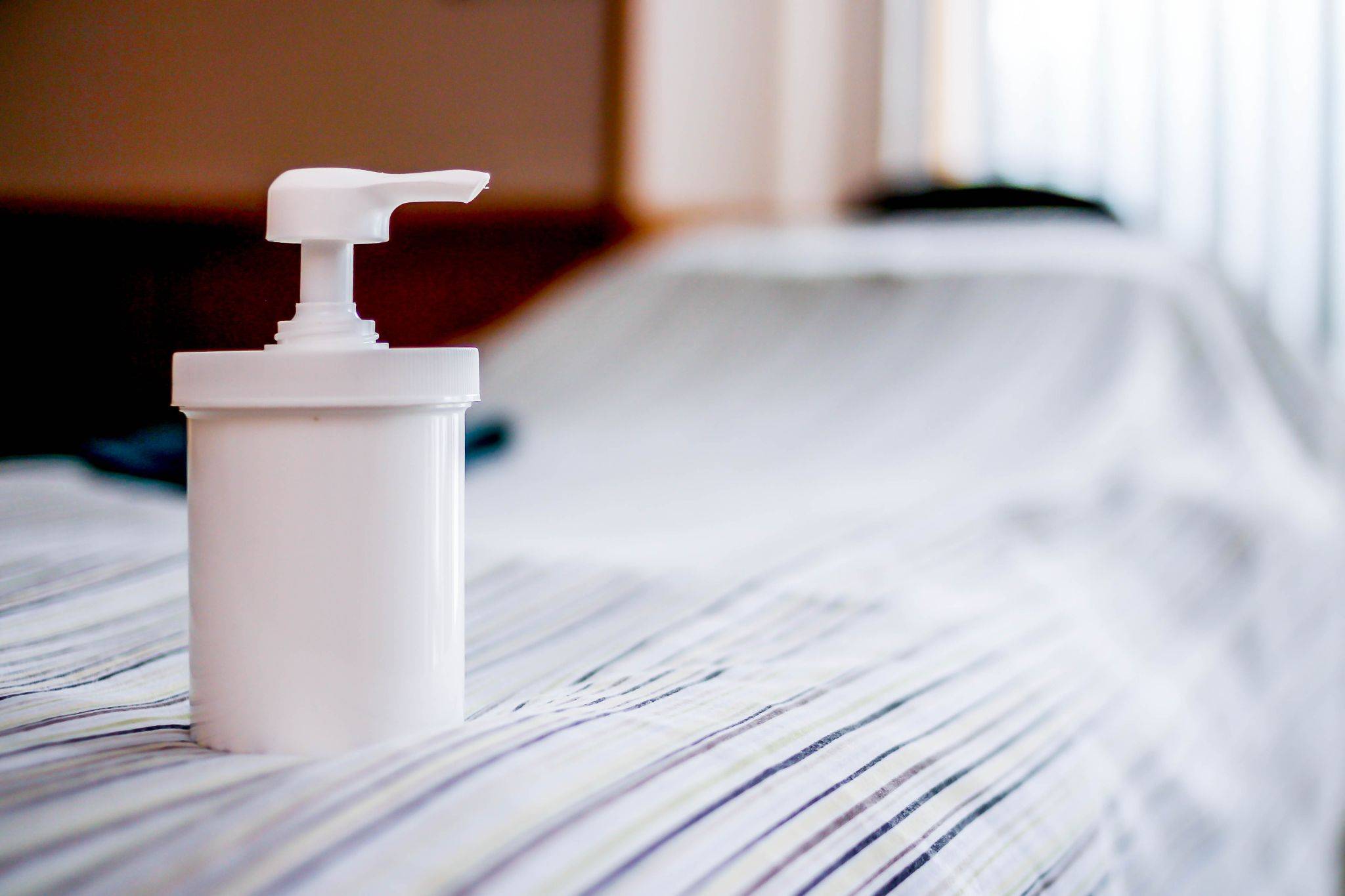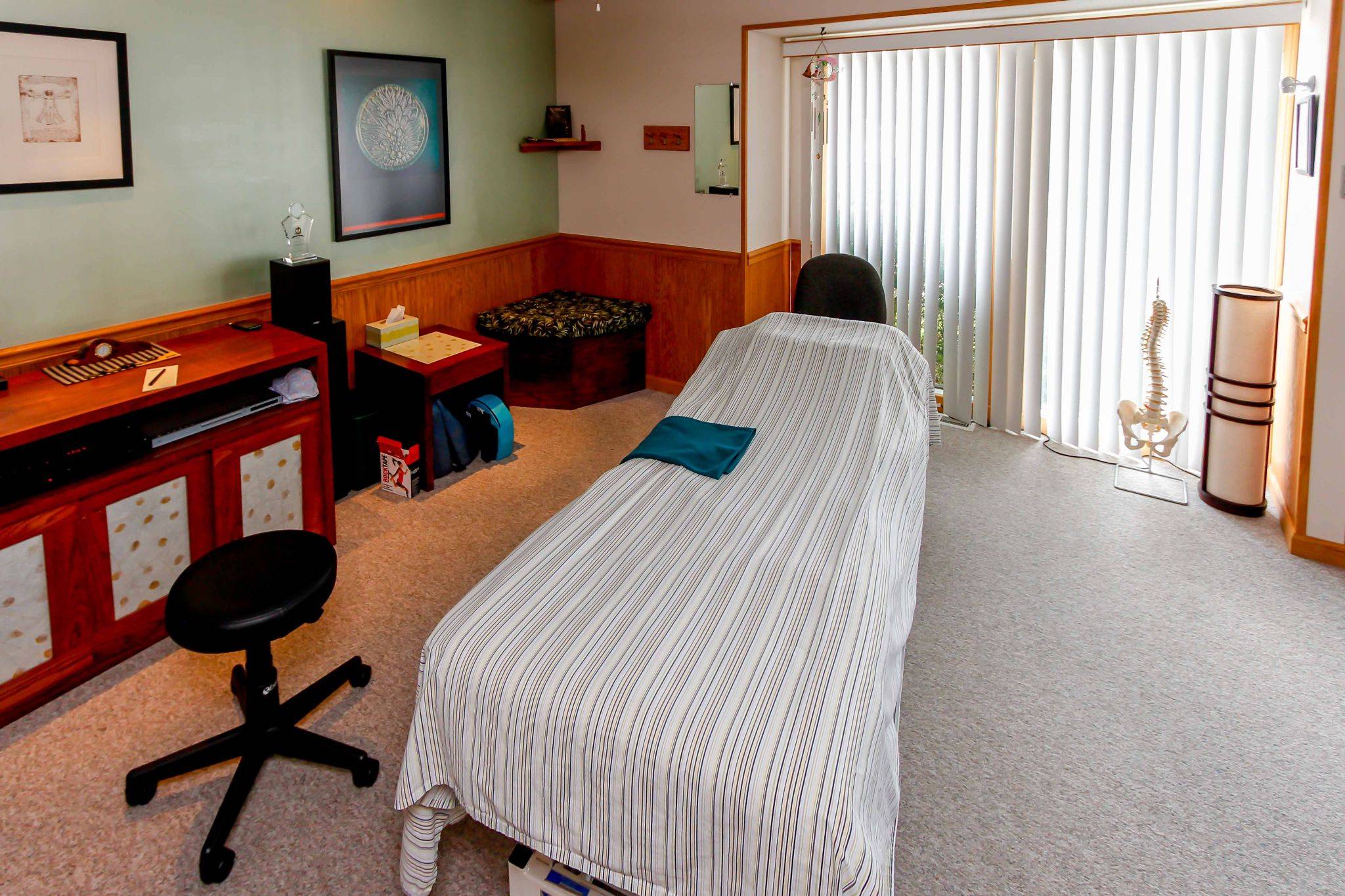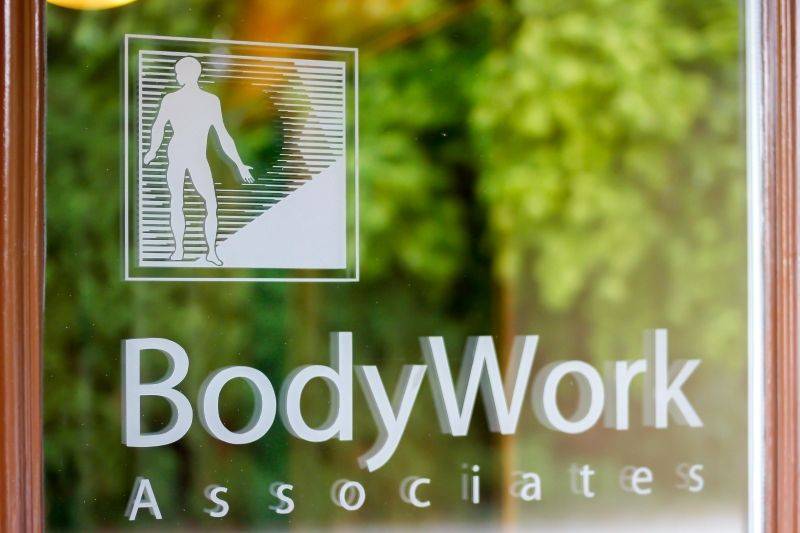Walking through the doors of BodyWork Associates after this week’s sweltering temperatures felt like entering an oasis. The atmosphere was quiet and calming. In the waiting area, an older woman sat waiting for her spouse to finish his treatment while some co-workers chatted softly. The massage studios had soft light, subtly patterned blankets on the massage tables, and a plant or two along the walls. BodyWork Associates, near the corner of Windsor and Neil in Champaign, is the professional home of over a dozen certified massage therapists specializing in Precision Neuromuscular Therapy (PNMT), a technique developed in 1997 by president and mastermind Doug Nelson.
Doug is hardly new to massage therapy. He entered the profession decades ago and worked as a sports massage therapist for the Chicago Bulls and an NFL team before dedicating himself to developing PNMT, a technique that he describes as a marriage of critical thinking about anatomy and “educated hands.” In addition to relaxation, Doug told me he hopes the therapy he and his staff provide is based on deep knowledge about the body’s systems and how they are interconnected.
According to Nelson, PNMT is strongly guided by the science of soft-tissue therapy. “These days, I’m less interested in philosophy and more interested in facts. I have been involved in many research endeavors and have learned to apply that kind of questioning to my daily practice.”
He emphasized that he wants to help people feel better, but also to be able to explain why his therapy works when people ask. “The other day, a physician came to one of my client’s sessions,” Nelson said. “I want to be able to explain exactly what I’m doing if he asked about my work at the anatomical level.”
This desire to thoroughly know and understand the science behind massage therapy informs every aspect of his work, which extends far beyond BodyWork Associates. Nelson is also the founder of a teaching institute, which offers seminars on PNMT to thousands of massage therapists across the country each year. These seminars emphasize the basic tenets of PNMT: accurately assessing the cause of pain; providing precise, rather than more, pressure; and continuing to update the approach based on new research and results.

Nelson is also the author of two books: Table Lessons: Insights in the Practice of Massage Therapy and, more recently, The Mystery of Pain, which is designed for lay people.
“The one common denominator among the clients I see is pain,” he said. “So I wanted to read all about that and learn more about that.“
Through the process of researching the book — which involved conducting dozens of interviews with people who he said often feel invalidated because their experiences of pain don’t always match the expectations of the medical community — Nelson says he learned that pain is not a puzzle, but a mystery. “A puzzle is something that needs just one extra piece to make it go away. But in a mystery, the pieces are all already there. Managing pain isn’t about achieving a home run. It’s about the collective effect of a lot of small treatments and choices. It’s not very sexy, but it also happens to be true.”

Smile Politely: How did you first get started in massage therapy?
Doug Nelson: I was very passionate about music performance and went to college as a vocal music major. I saw something in my music friends that I did not have, a certain passion and ease that I did not feel. This realization was rather devastating to me, since I was sure that music would be my life’s work. Not knowing what else to do, I began teaching music and noticed that students knew what to do cognitively but they could not get their bodies to execute the intended movement. Based on my own experience with yoga, I began instructing them in various movement strategies, including some hands-on work. I was clueless, but even a blind squirrel finds a nut once in a while.
Seeing results and wanting to know more, I did a year-long yoga teacher training in 1976. At the very end, my new roommate had just finished a massage therapy training program and needed someone to practice on. (I told him that if he was serious about this, he should practice as often as possible and I was willing to help in that endeavor) I did my own training in massage therapy in 1977 and have really never looked back. This discipline has resonated with me; I get to use my hands, my head, and my heart. I am thankful to have found something that challenges me every day. Better yet, I have had the opportunity to help people in the performing arts who have playing injuries, so I feel like I am contributing to the artistic world in a different way. The circle completed itself.
SP: How long has BodyWork Associates been in the area, and how has it expanded and changed during its time here?
Nelson: I started BodyWork Associates in 1982 in a little office near Springfield and Prospect in Champaign. A move to Lincoln Square followed in 1983 and the office was there until we moved to Huntington Towers in 1986. Above us was Wolfram Research and next to us was the business that evolved into Volition. Pretty good neighbors! I was able to purchase the office building we presently occupy in 1999. Having an office on the campus of the University of Illinois began in 2006 with an office in the lower level of the Union. When the ARC was opened, we moved there. Being on campus has been a great experience; we have enjoyed serving both undergrads and grad students in addition to faculty and staff. Having an office on campus is convenient for them and a way for us to participate fully in the university environment.
As the years have gone by, perhaps the greatest change is clarity about our mission and role within the health care community and the community at large. Our role with regard to other health care providers is often that we fulfill a role that they either do not have time to do or aren’t ideally suited for. When a physical therapist wants to increase strength, that’s hard to do when there is tissue injury. Two or three sessions with us will dramatically increase the effectiveness of the physical therapy. If a dentist needs to spend a long time with a procedure that requires full mouth opening, the jaw is likely to be sore afterwards. PNMT for the muscles of the jaw can remove this unfortunate side effect of a necessary dental intervention. One of our largest referral sources is primary care physicians, who don’t have a lot of tools available to them when patients present with muscular tension and discomfort. The best way for us to be successful is to help make other health care providers successful using our understanding of anatomy and muscle function.
Maturity brings clarity about what we are good at, where we fit, and perhaps more importantly, when our approach isn’t the best choice. In the end, it comes down to the right therapy, for the right reason, at the right time, and in the right frequency.

SP: What can people new to massage expect when they go to BodyWork for the first time? What’s the experience like?
Nelson: When people visit us for the first time, there is usually some annoying discomfort that has been bothering them and isn’t dissipating with time. Initially, the client and therapist will sit down and clarify what the goal of the session is for that day. Treatment approaches are like an answers; to get the right answer, you must first clarify the question. For some, concentrating all the work in a problem area (such as the neck and shoulders) is the perfect choice. For others, a general session over the whole body is more appropriate. Most importantly, clients realize that they have choices. We have no routine or recipe for our sessions… it’s a completely fluid and flexible approach to massage therapy. Done well, that fluidity aims to give each person a totally customized session. To do that successfully requires that everyone pay attention and communicate clearly as to goals and expectations.
SP What distinguishes your services from other massage businesses in the area?
Nelson: I can only speak to what we do, but our sole focus is Precision Neuromuscular Therapy. We are not a spa, and yet we are not physical therapists either. We fall in that land in between. If you want a massage and a pedicure, that’s not us. If you are in such pain that you are in tears, you should see your doctor.
Our market is the thousands of people in this community who live with annoying discomfort everyday, but do not realize that something can be done about it. They are going to work, taking care of their children or aging parents, showing up to do what is needed of them every day, but they do so in great discomfort. The medical system does not have a lot to offer these people (and they aren’t often their preferred patients); they often fall through the cracks in the medical system as the problem isn’t quite “serious” enough. This isn’t just a crack; it’s a chasm.
While the need for what we do is great, there are a few impediments along the way. First, people often wrongly attribute their discomfort to aging or arthritis, or a host of other conditions they feel powerless to change. If we treat your neck and you have a substantial increase in rotation, I’m pretty sure your arthritis didn’t go away and you didn’t decrease your age. It is often quite sad after a session to see people realize that they have been needlessly living with something that could have been improved.
SP: What background and training do BodyWork massage therapists possess?
Nelson: Since I am the founder of PNMT, one of the prerequisites for being on my staff is the commitment to studying and certifying in PNMT. Each of my staff has a curiosity about the work and loves to problem solve. We have a mentoring and training program that helps therapists learn and grow in the work. With so many of my staff having been a part of the office for years, they have a deep knowledge base to share with newer therapists. At the same time, the everyone on staff loves to learn and each therapist has something to offer. It is truly a learning community; we all learn from each other.
SP: What are some of the most common misperceptions about massage therapy?
Nelson: To (mis)perceive something means that you have a perception already. Say the word “massage” to anyone and they immediately have a concept of what they think that experience means. I am always curious about where people get the ideas they have. From ads in magazines? Cruise ship massages? Their hair salon? If people have only that image of massage, they may not choose to treat their pain by turning to massage, and that holds us back.
I want to redefine what massage means. Maybe it’s age, or the fact that I’ve been doing it for so many years, but I want to influence that definition. I don’t feel bound by the idea that a client has to be completely disrobed between two sheets or that every part of the body needs to be massaged. I want to do what works.
———
Outside of all of his work with massage therapy, Nelson is very involved in the local arts scene, including the Krannert Center, which he described as a “jewel of our community.” And his background as a musician (he plays guitar and entered college as a vocal performance major) has made him especially attuned to forms of pain that musicians may experience.
“I want to be able to provide treatment not only for the university’s athletes, who already have phenomenal services in many ways, but also for the musicians and other artists at the university, who may also experience discomfort from what they do,” he said.
Another project Nelson has been involved in is an art show called The Art of Science, which includes scientific images from the Institute for Genomic Biology.
“One day, while reading the New York Times, I was reading about a really cool research study when, halfway through the article, I realized the study was from the U of I,” he said. “I wondered how many others, like myself, were unaware of the great things happening right here in our community. Scientists are too busy doing the work to tell everyone what they are doing; that isn’t really their job anyway. After approaching Dr. Gene Robinson at the IGB, he agreed to let his staff put some esthetically interesting research images up for display.”
The Art of Science is approaching its fifth year, and images from past shows are now on display at Willard, Midway, and O’Hare airports. “It makes me proud to walk by the display at O’Hare and know that my office had something to do with shining a light on the good work done here at the University of Illinois. It is one of the many reasons to be proud of this place we call home.”
One of the images from the show was in display in Nelson’s office as he spoke to me, a sign of how BodyWork Associates blends art and science in its vision and in what it offers our community.









